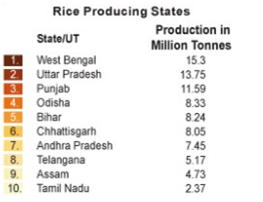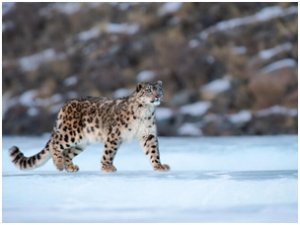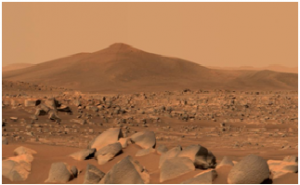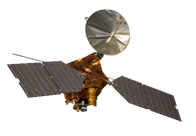THE PARLIAMENTARY PROCEEDINGS: MONSOON SESSION 2022
1.EXPLAINED: THE ENERGY CONSERVATION (AMENDMENT) BILL 2022 AND INDIA’S CLIMATE TARGETS
THE CONTEXT: In a bid to meet India’s commitment to exceed its Paris agreement climate targets, the Centre plans to table the Energy Conservation (Amendment) Bill 2022 in the ongoing Monsoon session of Parliament.
THE EXPLANATION:
The Energy Conservation (Amendment) Bill seeks to increase India’s demand for renewable energy, thereby reducing the nation’s carbon emissions. The Bill proposes to amend the Electricity Conservation Act 2001, last amended in 2010, to introduce changes such as incentivising the use of clean energy by issuing carbon saving certificates.
What does the current Energy Conservation Act say?
• Currently, the Energy Conservation Act, 2001 (amended in 2010) governs the domain in India. The Act empowers the Centre to specify norms and standards of energy efficiency for appliances, industrial equipment and buildings with a connected load over 100 kilo Watts (kW) or a contractual demand of more than 15 kilovolt-amperes (kVA).
• The Act established the Bureau of Energy Efficiency. The 2010 amendment extended the tenure of the Director General of the Bureau of Energy Efficiency from three to five years. This Bureau can specify qualifications required for energy auditors who monitor and review the power consumption of various industries. The Bureau, which falls under the Central government, appoints its own officers and staff.
• The Act allows the Centre to prohibit the manufacture, sale, purchase or import of any particular equipment unless it conforms to specified norms issued six months/ one year before.
What are the proposed changes?
• The main objective of these proposed amendments is to reduce India’s power consumption via fossil fuels and thereby minimize the nation’s carbon footprint. The Centre aims to develop India’s Carbon market and boost the adoption of clean technology. India aims to meet its Nationally Determined Contributions (NDCs), as mentioned in the Paris Climate Agreement, before its 2030 target date.
• Defining the minimum share of renewable energy to be consumed by industrial units or any establishment. This consumption may be done directly from a renewable energy source or indirectly via the power grid.
• Incentivising efforts to use clean energy by issuing carbon saving certificates
• Strengthening institutions set up originally under the Act, such as the Bureau of Energy Efficiency
• Facilitating the promotion of green Hydrogen as an alternative to the fossil fuels used by industries
• Considering additional incentives like carbon credits for the use of clean energy to lure the private sector to climate action.
• Including larger residential buildings under energy conservation standards to promote sustainable habitats. Currently, only large industries and their buildings come under the ambit of the Act.
What are India’s climate change commitments?
Recently, India revised the NDCs at the COP26 Summit held in Glasgow on November 1, 2021. India’s five new climate targets are:
1. To increase its non-fossil energy capacity to 500 GW by 2030
2. To meet 50 per cent of India’s power demand via renewable energy sources
3. To reduce the carbon intensity of the Indian economy by 45 per cent
4. To reduce India’s total projected carbon emissions by one billion tonnes from 2021 to 2030
5. To achieve a target net zero (for carbon emissions) by 2070.
THE INTERNATIONAL RELATIONS
2.IMF CUTS GLOBAL GROWTH FORECASTS, WARNS HIGH INFLATION THREATENS RECESSION
THE CONTEXT: Recently, the International Monetary Fund cut global growth forecasts again, warning that downside risks from high inflation and the Ukraine war were materializing and could push the world economy to the brink of recession if left unchecked.
THE EXPLANATION:
• Global real GDP growth will slow to 3.2% in 2022 from a forecast of 3.6% issued in April, the IMF said in an update of its World Economic Outlook. It added that world GDP actually contracted in the second quarter due to downturns in China and Russia.
• The Fund cut its 2023 growth forecast to 2.9% from the April estimate of 3.6%, citing the impact of tighter monetary policy.
• World growth had rebounded in 2021 to 6.1% after the COVID-19 pandemic crushed global output in 2020 with a 3.1% contraction.
RUSSIAN GAS EMBARGO
• The Fund said its latest forecasts were “extraordinarily uncertain” and subject to downside risks from Russia’s war in Ukraine spiking energy and food prices higher. This would exacerbate inflation and embed longer-term inflationary expectations that would prompt further monetary policy tightening.
• Under a “plausible” alternative scenario that includes a complete cut-off of Russian gas supplies to Europe by year-end and a further 30% drop in Russian oil exports, the IMF said global growth would slow to 2.6% in 2022 and 2% in 2023, with growth virtually zero in Europe and the United States next year.
• Global growth has fallen below 2% only five times since 1970, the IMF said, including the 2020 COVID-19 recession.
• The IMF said it now expects the 2022 inflation rate in advanced economies to reach 6.6%, up from 5.7% in the April forecasts, adding that it would remain elevated for longer than previously anticipated. Inflation in emerging market and developing countries is now expected to reach 9.5% in 2022, up from 8.7% in April.
U.S., CHINA DOWNGRADES
• For the United States, the IMF confirmed its July 12 forecasts of 2.3% growth in 2022 and an anemic 1.0% for 2023, which it previously cut twice since April on slowing demand.
• The Fund deeply cut China’s 2022 GDP growth forecast to 3.3% from 4.4% in April, citing COVID-19 outbreaks and widespread lockdowns in major cities that have curtailed production and worsened global supply chain disruptions.
• The IMF also said the worsening crisis in China’s property sector was dragging down sales and investment in real estate. It said additional fiscal support from Beijing could improve the growth outlook, but a sustained slowdown in China driven by larger-scale virus outbreaks and lockdowns would have strong spillovers.
• Russia’s economy is expected to contract by 6.0% in 2022 due to tightening Western financial and energy sanctions, and decline a further 3.5% in 2023, the IMF said. It estimated that Ukraine’s economy will shrink by some 45% due to the war, but the estimate comes with extreme uncertainty.
VALUE ADDITION:
INTERNATIONAL MONETARY FUND:
• The International Monetary Fund (IMF) is an international financial institution, Headquartered in Washington, D.C.
• Formed in July 1944, and its consisting of 190 countries.
• Countries working to foster global monetary cooperation, secure financial stability, facilitate international trade, promote high employment and sustainable economic growth, and reduce poverty around the world while periodically depending on the World Bank for its resources.
• It came into formal existence in 1945 with 29 member countries and the goal of reconstructing the international monetary system.
• It now plays a central role in the management of balance of payments difficulties and international financial crises.
• IMF Members: Any other state, whether or not a member of the UN, may become a member of the IMF in accordance with IMF Articles of Agreement and terms prescribed by the Board of Governors.
• Membership in the IMF is a prerequisite to membership in the IBRD.
• Pay a quota subscription: On joining the IMF, each member country contributes a certain sum of money, called a quota subscription, which is based on the country’s wealth and economic performance (Quota Formula).
Functions:
1. Regulatory functions: IMF functions as a regulatory body and as per the rules of the Articles of Agreement, it also focuses on administering a code of conduct for exchange rate policies and restrictions on payments for current account transactions.
2. Financial functions: IMF provides financial support and resources to the member countries to meet short term and medium term Balance of Payments (BOP) disequilibrium.
3. Consultative functions: IMF is a centre for international cooperation for the member countries. It also acts as a source of counsel and technical assistance.
THE ENVIRONMENT, ECOLOGY AND CLIMATE CHANGE
3.DESPITE INCENTIVES, WHY IS DSR TECHNIQUE NOT GAINING GROUND IN PUNJAB?
THE CONTEXT: The Punjab government has announced a Rs 1,500 per acre incentive to farmers for adopting the DSR method. But they are returning to the traditional method of puddled transplanting of rice in majority of the paddy area.
THE EXPLANATION:
Punjab is not only a long way away from its target of Direct Sowing of Rice (DSR) for this year (as it could only achieve 6.7% of the total target) but also the state has seen 85.7% decline in DSR area from the last season.
This has happened (ahead of paddy sowing) despite the state government announcing a Rs 1,500 per acre incentive to the farmers for adopting the DSR method and earmarking Rs 450 crore for the purpose.
What was the target for DSR and how much area could be brought under it in the state?
• In Punjab, rice (paddy and basmati) is grown in over 30 lakh hectares of farmland every year. The state government has set a target of bringing 12 lakh hectares (29.64 lakh acres) under DSR, which does not require puddled fields for transplanting paddy nursery and flood irrigation.
government has set a target of bringing 12 lakh hectares (29.64 lakh acres) under DSR, which does not require puddled fields for transplanting paddy nursery and flood irrigation.
• With this much area, Punjab’s DSR area is 93.3% down from the target and if one compares it with last year’s (2021) area then also it is 85.7% down. Last year, 5.62 lakh hectares (13.88 lakh acres) was under DSR in the state and that was also the highest ever area under DSR in the history of the state.
• The main purpose of promoting DSR by announcing incentives was to save groundwater. Experts say that around 15% to 20% of groundwater can be saved by adopting DSR.
Direct Seeding of Rice (DSR)
• Direct seeding is a method under which pre-germinated seeds are directly drilled into the field by a tractor-powered machine.
• There is no nursery preparation or transplantation involved in this method.
• In this water is replaced by real chemical herbicides and farmers have to only level their land and give one pre-sowing irrigation.
• The Punjab Agricultural University (PAU) in Ludhiana has developed a ‘Lucky Seed Drill’ that can both sow seeds and simultaneously spray herbicides to control weeds.
Advantages
• Water savings because the first irrigation (apart from the pre-sowing rain) under DSR is necessary only 21 days after sowing.
• Less requirement of labour.
• Reduction in methane emissions and global warming potential
• Little disturbance to soil structure
• Enhanced system productivity
Disadvantage
• The main issue is the availability of herbicides.
• The seed requirement for DSR is also higher than transplanting.
• Land levelling is compulsory in DSR, therefore, increases the cost.
• In the DSR technique plants have to come out properly before the monsoon rains arrive, early sowing is required.
• The DSR method is not suitable on certain types of soil and in such fields only transplanting methods work.
Difference Between DSR & Normal Transplantation
In transplanting, farmers prepare nurseries where the paddy seeds are first sown and raised into young plants. These seedlings are then uprooted and replanted 25-35 days later in the main field.
4.STUDY SHEDS LIGHT ON PREY-PREDATOR RELATIONSHIP IN HIMACHAL PRADESH
THE CONTEXT: A recent study by the Zoological Survey of India (ZSI) on snow leopard ( Panthera uncia) has thrown up interesting insights on the elusive mountain cat and its prey species.
THE EXPLANATION:
The study under National Mission on Himalayan Studies revealed a strong link between habitat use by Snow Leopard and its prey species Siberian ibex and blue sheep.
Key highlights of the study:
Aim: Examining how the predator used habitat in presence or absence of its prey species and vice-versa.
• The snow leopard detection probability was high if the site was used by its prey species, i.e., ibex and blue sheep.
• Whereas, in the case of the prey species, the probability of detection was low when the predator (snow leopard) was present and detected.
• Snow leopards use rugged mountainous areas or non-forested areas covering an altitude between 3200m-5200m.
• The study suggested that habitat covariates, such as barren area, grassland, aspect, slope and distance to water were important drivers of habitat use for the snow leopard as well as its prey species.
• Spiti Valley possessed a good habitat in and outside the protected areas which could support a viable population of both threatened snow leopard and its prey species.
• Higher up in the mountains, predators such as snow leopards regulated the populations of herbivores such as the blue sheep and Siberian ibex, thereby safeguarding the health of grasslands.
• A long-term absence of snow leopards could cause trophic cascades as ungulate populations would likely increase, leading to depletion of vegetation cover.
Snow leopard (Panthera uncia):
• It is also known as the ounce.
• Habitat: Extends across the mountainous regions of 12 countries across Asia: Afghanistan, Bhutan, China, India, Kazakhstan, Kyrgyz Republic, Mongolia, Nepal, Pakistan, Russia, Tajikistan, and Uzbekistan.
• 60% of the habitat found in China.
• In India they are found in Jammu and Kashmir, Ladakh, Uttarakhand, Himachal Pradesh, Sikkim, and Arunachal Pradesh.
• Population: total estimated 4,000-6,500
• Its fur is whitish to grey with black spots on head. Eyes are Pale green or grey in colour.
Conservation Status
• IUCN Status: Vulnerable
• CITES: Appendix I.
• Convention on Migratory Species (CMS): Appendix I.
• Wild Life (Protection) Act, 1972: Schedule Distribution
THE SCIENCE AND TECHNOLOGY
5.NASA RELEASES FIRST PIECES OF THE MULTISPECTRAL MAPS OF MARS
THE CONTEXT: According to National Aeronautics and Space Administration (NASA) Scientists released the first pieces of the multispectral maps made by the Compact Reconnaissance Imaging Spectrometer for Mars (CRISM).
THE EXPLANATION:
• NASA’s Mars Reconnaissance Orbiter (MRO) has been mapping minerals on the red planet for the last 16 years with the help of CRISM.
• The scientists highlighted that anyone can access these maps from NASA’s ‘Planetary Data System website’. It has managed to map 86 per cent of Mars’ surface with its multispectral mode, detecting nearly all of the minerals on the surface.
managed to map 86 per cent of Mars’ surface with its multispectral mode, detecting nearly all of the minerals on the surface.
• CRISM is a visible-infrared spectrometer whose primary goal is to look for mineralogical evidence for past water on the surface and subsurface of Mars.
• The coverage goal for the multispectral mode was 80 per cent, owing to the limited lifetime of the coolers needed by its infrared detector. But it has managed to exceed that goal.
• The hyper spectral mode, which uses the wavelengths from the visible and near-infrared (VNIR) detector, doesn’t require cryogenic cooling and has attained more than 99 per cent coverage.
• According to the Scientists, the data gathered by CRISM over the last 16 years is invaluable for numerous research avenues and missions to Martian surface.
• For example, NASA’s Mars 2020 mission, which saw the Perseverance rover land on the surface of Mars, heavily relied on data gathered by CRISM.
VALUE ADDITION:
CRISM:
CRISM (Compact Reconnaissance Imaging Spectrometer for Mars): This instrument splits visible and near-infrared light in its images into hundreds of “colours” that identify minerals, especially those likely formed in the presence of water, in surface areas on Mars not much bigger than a football field.
Mars Reconnaissance Orbiter (MRO)
• MRO was launched in 2005, on a search for evidence that water persisted on the surface of Mars for a long period of time.
• It contains a host of scientific instruments such as cameras, spectrometers, and radar, which are used to analyze the landforms, stratigraphy, minerals, and ice of Mars.
THE PRELIMS PERSPECTIVE
6.WHAT IS THE MEANING OF THE ‘JOHAR’ GREETING USED BY PRESIDENT?
THE CONTEXT: The 15th President of India, assumed office with a ‘Johar’ greeting to the country.
THE EXPLANATION:
Johar’, which essentially means ‘salutation and welcome’, is used within the tribal communities of Jharkhand, and in parts of Chhattisgarh and Odisha. According to several tribal leaders from Jharkhand, the word ‘Johar’ also means ‘paying respect’. Tribal communities are nature worshippers and follow Sarna religion code, although it is not an official religion.
Do all tribal communities use the word ‘Johar’ for greeting?
There are 32 tribal communities in Jharkhand who speak different dialects. Almost all, including tribal Christians, use the word ‘Johar’ along with some other words for salutation. Johar, is predominantly used by Santhali,Munda and Ho communities that share some similarities. People belonging to the Oraon community use the word ‘Jai Dharam’, apart from Johar, as a salutation.
Is there only one form of ‘Johar’ salutation?
There are at least four types. One of them is ‘Doboh Johar’, which is used between people where one among them has a higher standing. Ratan Tikrey, a former member of Tribes Advisory Council (TAC) said that in ‘Doboh Johar’ there is a ritual where the person with a tumbler full of water bows in front of the person of higher standing.
VALUE ADDITION:
ABOUT SANTHAL TRIBE
• Santhal is the third largest Scheduled Tribe community in the country after Gond and Bhil. The Santal, or Santhal, are an ethnic group native to India and Bangladesh in South Asia.
• Santals are the largest tribe in the Jharkhand state of India in terms of population and are also found in the states of Assam, Bihar, Odisha and West Bengal.
• In the past, the Santals were leading a nomadic life, gradually they came to settle down in the Chhota nagpur plateau. Towards the end of 18th Century they migrated to the Santal Parganas of Bihar and then they came to Odisha. They speak Santali language which belongs to the Munda group of languages. The Santali has its own script called “Olchiki” invented by Pundit Raghunath Murmu.
THE PRELIMS PRACTICE QUESTIONS
QUESTION OF THE DAY
Q. Recently, five new Ramsar sites were added into the list from India. Consider the following pairs with reference to it.
1. The Karikili Bird Sanctuary – Tamil Nadu
2. The Sakhya Sagar – Madhya Pradesh
3. The Pala Wetlands – Mizoram
4. Pichavaram Mangrove – Andhra Pradesh
How many pairs mentions above is/are correctly matched?
a) One pair only
b) Two pairs only
c) Three pairs only
d) All of them
ANSWER FOR THE PRACTICE QUESTION
Answer: C
Explanation:
Five new Ramsar sites were added into the list from India are as follows:
• The Karikili Bird Sanctuary, Pallikaranai Marsh Reserve Forest and Pichavaram Mangrove – Tamil Nadu
• The Sakhya Sagar – in Madhya Pradesh
• The Pala Wetlands – Mizoram

